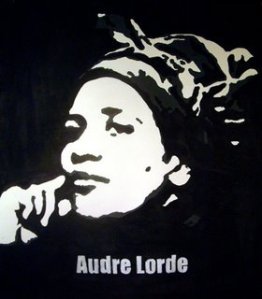 Twittern was das Zeug hält – aber nicht alleine vor dem heimischen Bildschirm, sondern gemeinsam mit anderen Studierenden und Doktoranden rund um das Thema Auslandsaufenthalt! Das Deutsche Historische Institut Paris, das Heinrich Heine Haus, die Pariser Außenstelle des DAAD, das Centre d’information sur l’Allemagne (CIDAL) und das Deutsche Forum für Kunstgeschichte Paris organisieren am 22. Januar 2013 ein Science Tweetup, für das sich interessierte Studierende und Doktoranden ab sofort bewerben können.
Twittern was das Zeug hält – aber nicht alleine vor dem heimischen Bildschirm, sondern gemeinsam mit anderen Studierenden und Doktoranden rund um das Thema Auslandsaufenthalt! Das Deutsche Historische Institut Paris, das Heinrich Heine Haus, die Pariser Außenstelle des DAAD, das Centre d’information sur l’Allemagne (CIDAL) und das Deutsche Forum für Kunstgeschichte Paris organisieren am 22. Januar 2013 ein Science Tweetup, für das sich interessierte Studierende und Doktoranden ab sofort bewerben können.
Das Tweetup begleitet die Diskussionsrunde „Etudier et vivre aujourd’hui dans le pays voisin. Table ronde avec des étudiants français et allemands, européens et du monde entier. Modération: Thomas Jordan“, die am 22.1.2013 ab 19h15 im Heinrich Heine Haus stattfindet. Anlass ist der 50. Jahrestag der Unterschreibung des Deutsch-Französischen Freundschaftsvertrags, in dessen Rahmen zahlreiche Veranstaltungen geplant sind.
Wer Lust hat, am Science Tweetup mit zu machen, kann sich ab sofort unter den Mailadressen blog [at] dhi-paris.fr und info [at] maison-heinrich-heine.fr mit einer kurzen Angabe der Motivation bewerben. Ein eigener Twitteraccount sowie ein Gerät zum Twittern sollten vorhanden sein. Twitterneulinge sind herzlich willkommen. Vor dem Tweetup findet ab 17h30 ebenfalls im Heinrich Heine Haus eine kleine Einführung ins wissenschaftliche Twittern statt.
Ort
Maison Heinrich Heine Paris
Cité Internationale Universitaire de Paris
27 C, Boulevard Jourdan F – 75014 Paris
Métro RER B – Cité Universitaire
Tramway T3 – Cité Universitaire
Bus 21, 88, 67 Cité Universitaire
Datum
22.1.2013
Zeit
ab 17h30 Vorbesprechung und Twittereinführung
ab 18h00: Warmtwittern zur Ausstellungseröffnung „Dé-construction(s) temporaire(s). Berlin – Paris 2013″
19h15: Beginn des Science Tweetups
Teilnehmer
max. 15 Studierende / Doktoranden und Interessierte mit eigenem Twitteraccount und Smartphone/Laptop…
Thema
Studieren im Ausland: Begegnung von Studierenden aus der ganzen Welt.
Begleitend zur Veranstaltung: „Etudier et vivre aujourd’hui dans le pays voisin.
Table ronde avec des étudiants français et allemands, européens et du monde entier.
Kontext
Veranstaltung zum 50. Jahrestag des Deutsch-Französischen Freundschaftsvertrags
Organisatoren
CIDAL, Pariser Außenstelle des DAAD, DFK, DHIP, Maison Heinrich Heine
Hashtag
#elysee50
Bewerbungen
Per Mail an blog [at] dhi-paris.fr und info [at] maison-heinrich-heine.fr
Siehe auch
50 Jahre Élysée-Vertrag: Aktionen deutsch-französischer Einrichtungen bei Twitter und Facebook, in: Digital Humanities am DHIP, 14.1.2013 <http://dhdhi.hypotheses.org/1401>.
Literatur
Christian Gries: Tweetups – Erfahrungen und Erkenntnisse, in: Social Media aus der Praxis, 19.12.2011, http://socialmediaaustausch.posterous.com/tweetups-erfahrungen-und-erkenntnisse#more
Mareike König, Twitter in der Wissenschaft: Ein Leitfaden für Historiker/innen, in: Digital Humanities am DHIP, 21.08.2012 http://dhdhi.hypotheses.org/1072.
Abbildung: Twitter escultura de arena, by Rosauro Ochoa, CC-BY 2.0
Quelle: http://dhdhi.hypotheses.org/1421
